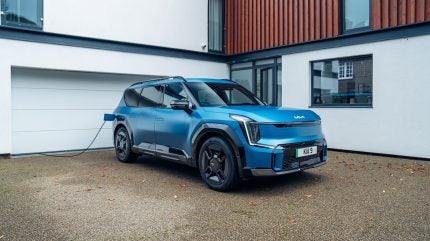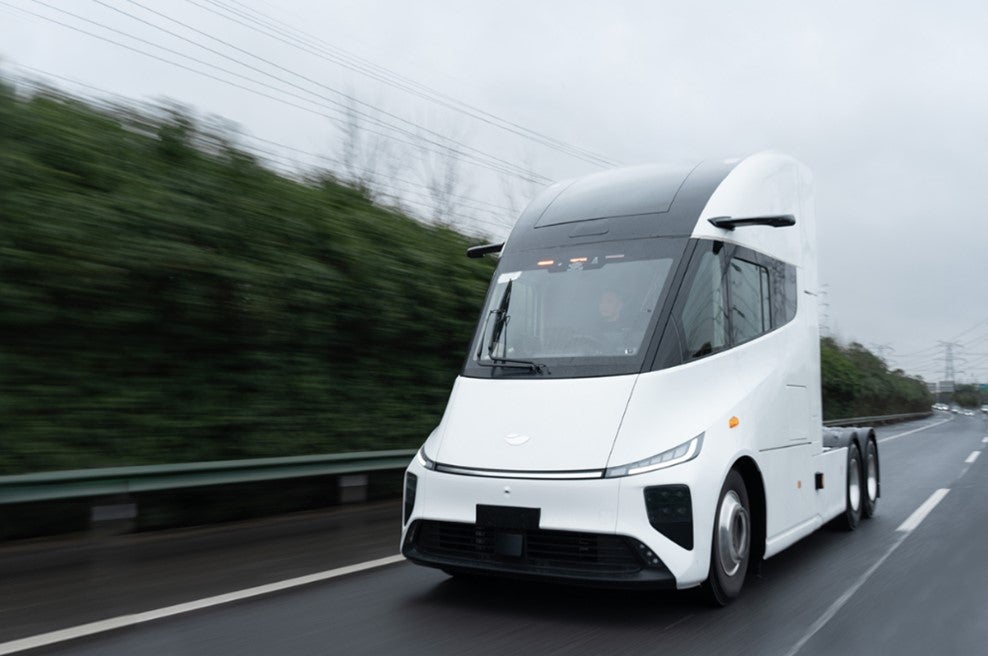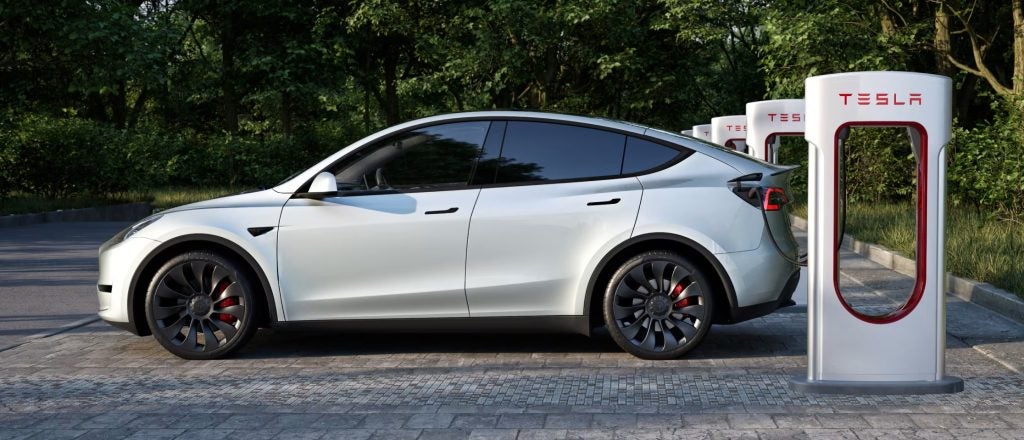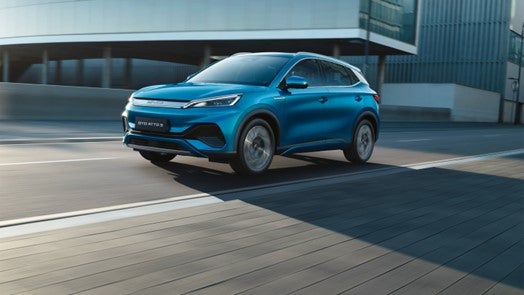
Many were the doubters when Kia Corporation told us it would be adding a full-sized SUV to its family of electric vehicles. Particularly when the price of admission has pitted it against multiple genuine premium brand contenders. But here we are, one year after the start of production and worldwide deliveries have now reportedly crossed the fifty thousand units mark.
West Point plant adds EV9
Some ninety per cent of the volume has gone to countries outside Korea: Europe and the USA have taken a large chunk of the total. Next, North America should soon become the number one region. To support that, US build, in the planning since 2023, commenced on 30 May at the Kia Georgia plant. Until now, all production has been at AutoLand Gwangmyeong – also known as Sohari 1 – in South Korea.
EV2-EV9…
After the 6 and now the 9, Kia will add many more EV-plus-a-number models by 2028, said Song Ho-sung in April. The EV3 (production starts this month) and EV5 we know about, with the company’s CEO naming the EV2 and EV4 as two further vehicles. All of these will be available across Europe, it has been confirmed, though the so-far China-only EV5 won’t arrive until 2025, followed by the 2 and 4 likely in 2026.
There will be other regional models such as the Clavis EV and Carens EV (India) while the Ray EV was reintroduced to the Korean market with a facelift and new battery in September 2023. Will there ever be an EV1 though? Nothing has been official said about that but logic suggests that would be the badging for the next Ray which will likely be available in Europe too.
How well do you really know your competitors?
Access the most comprehensive Company Profiles on the market, powered by GlobalData. Save hours of research. Gain competitive edge.

Thank you!
Your download email will arrive shortly
Not ready to buy yet? Download a free sample
We are confident about the unique quality of our Company Profiles. However, we want you to make the most beneficial decision for your business, so we offer a free sample that you can download by submitting the below form
By GlobalData…with a few missing numbers
What about an EV7 and an EV8? Of the former, nothing is known but the latter was said to be the Stinger successor, a project that was recently cancelled. Perhaps both numbers will be added towards 2029 or 2030, one being a crossover/SUV and the other a sedan/hatchback.
Enough though of what is to come as there is much to say about Kia’s biggest electric SUV right now. In Britain, true competitors are few, not even Hyundai (or Genesis) having an equivalent model. Kia has also taken certain steps to ensure that the EV9 remains full of novelty over the course of what will likely be a six- to seven-year life cycle.
Luxury interior
Aside from how this big vehicle looks – in short, like nothing else – the interior is just as distinct. There is gorgeous soft lighting and spaces everywhere to stow things, plus very many physical controls. Lots of things can be done from the steering wheel where proper buttons abound, while the touchscreens are the opposite of over-burdened. Even the heating and fans for the seats are operated unusually: these too are physical controls but placed on the door-cards.
There is also a great abundance of space for at least five occupants and even the third row is fine for adults (OK, on short trips only perhaps). The boot has a volume of 333 litres and there is one up front too, though at 52 litres in two-motors example that’s really only meant for the charging leads.
Two seating layout choices
Kia gives you the choice of seven- and six-seat configurations and a variety of second-row seat options. The first-row features seats which can fold down to form part of a bed. The second row, meanwhile, can be specified with a three-place bench or two swiveling chairs. The first and second rows can be reclined, the idea being to create a resting space when the EV9 is being charged. With the swivel seat option, the second-row spaces spin 180 degrees to face those in the rear-most row.
A 3,100 mm wheelbase plus the flat floor of Hyundai Motor Group’s E-GMP (architecture) help explain why the EV9 is just so commodious for humans. The vehicle is also taller than it looks, to the benefit of not only headroom but boot capacity.
Rear-drive or four-wheel drive
There are four variants but only one, the base Air trim level, is rear-drive. This is also the sole EV9 to have a single motor, the outputs of which are 150 kW (204 PS) and 350 Nm. Above this are positioned the GT-Line (two x 141 kW motors = 282 kW/383 PS) and GT-Line S in seven- or more expensive six-seat specification. In all cases, the battery capacity is 99.8 kWh and drive to the rear or both axles is via a one-speed transmission.
Thanks to an 800V electrical architecture, charging speed is at up to 350 kW and on the performance front, two-motor variants will reach 62 mph in just 5.3 seconds. The worst range would be about 250 miles in the dead of winter and the best somewhat less than the best 415 of the official Combined number. Keep the drive mode setting in Eco – there is also Sport, Normal and My Drive – and about 280-300 miles is possible.
For such a big and heavy (almost 2,700 kilos) vehicle, the EV9 tends not to feel or handle like one. It also has commendably good dynamics and impressively little lean. The steering could be more precise, that being the only real fly in the feedback ointment.
Will there be a GT?
An even more powerful EV9 is due for launch in 2025, at least in Korea – whether or not the GT will come to the UK or other European countries is yet to be stated. The company confirmed in April that the range-topper will shoot to 100 km/h from zero in four seconds but has thus far said nothing about power and torque numbers. With the EV6 GT due for a raft of revisions in the fourth quarter, the future EV9 GT might share the powerpack of that model, who knows.
Imagine though that next year could be the first time we hear of an eighty thousand pound Kia? Not that far back it was something of a shock when a high trim level Sorento crossed the forty thousand mark. The brand has really travelled a long way, ever more upwards during the 2020s. Clearly it isn’t done yet.
Conclusion
If you view the EV9 as a competitor to the BMW iX – or the Volvo EX90 due out later in 2024, a model we know will be the first Volvo to have a six-figure price tag – then this Kia could be considered a bargain. And even high pricing will do the Korean make no harm – in fact it will inevitably lift the ever-rising image by yet another notch.
MY24 Kia EV9 pricing starts at GBP65,025 and rises to GBP78,775 OTR







